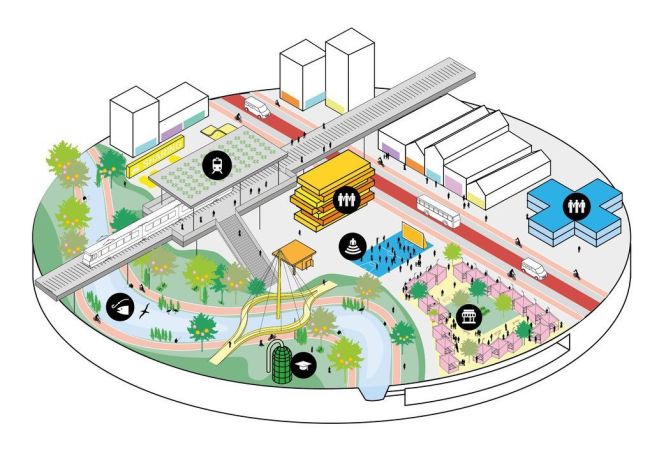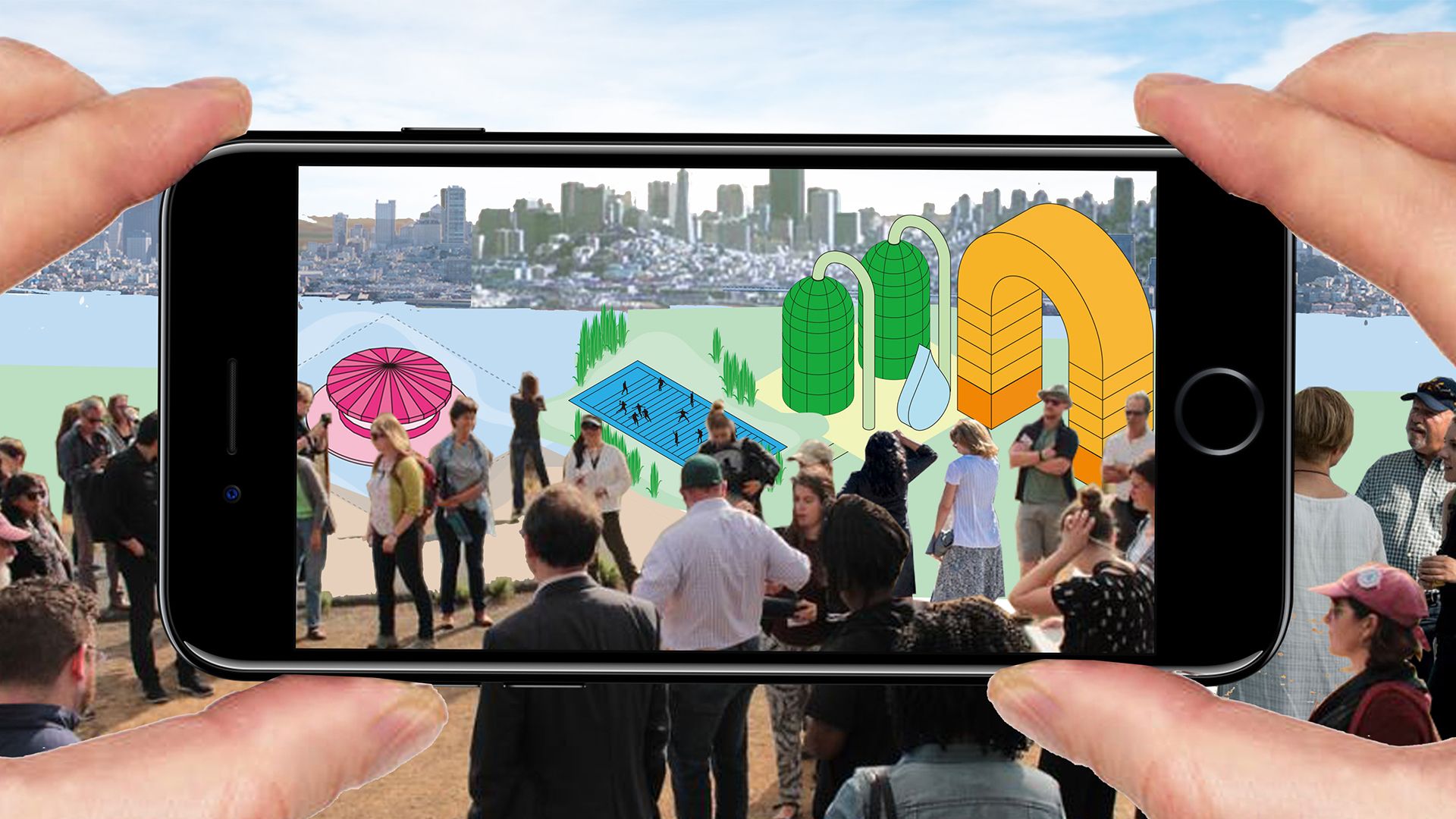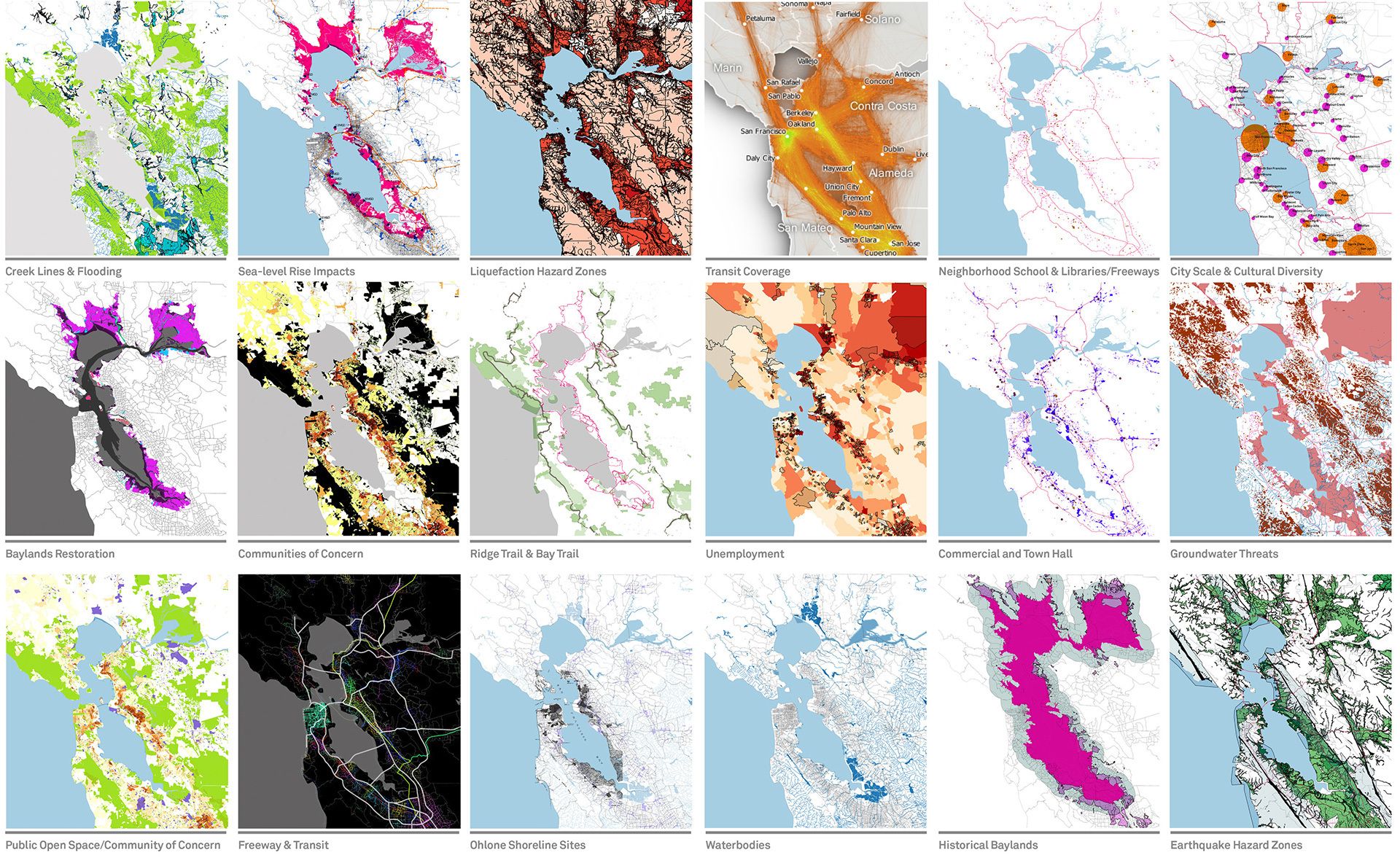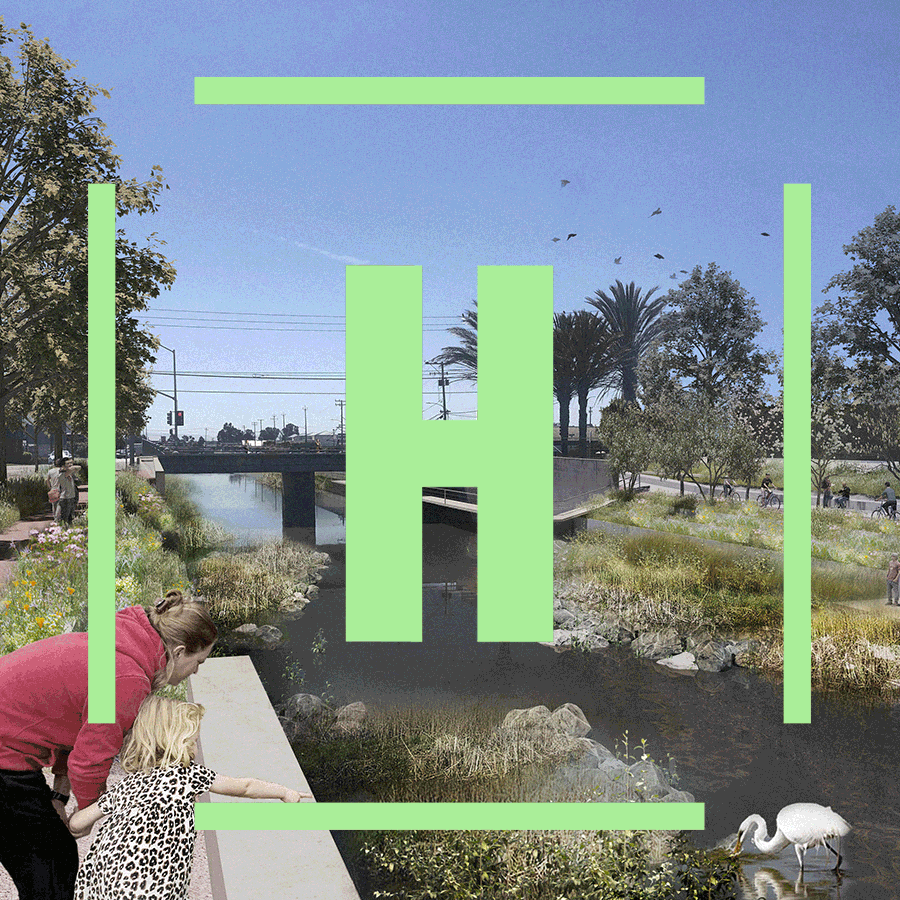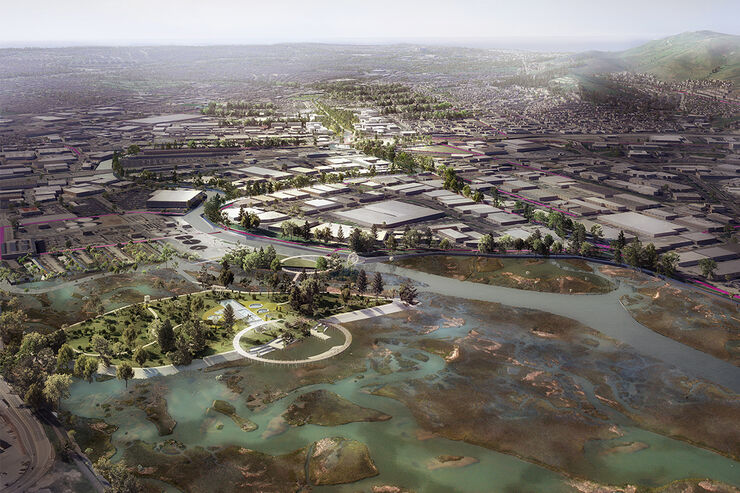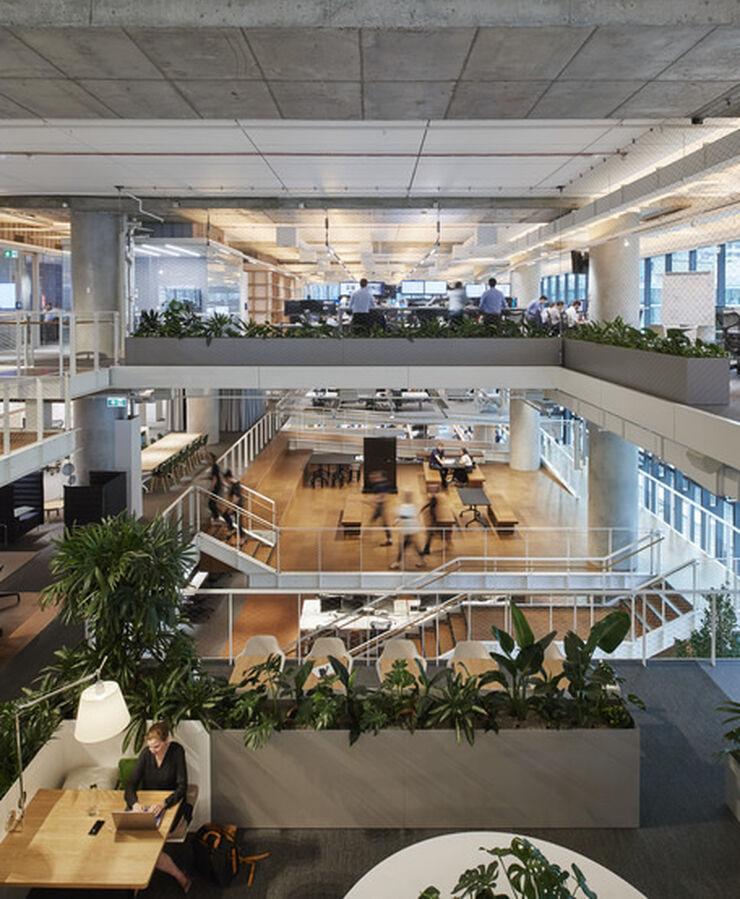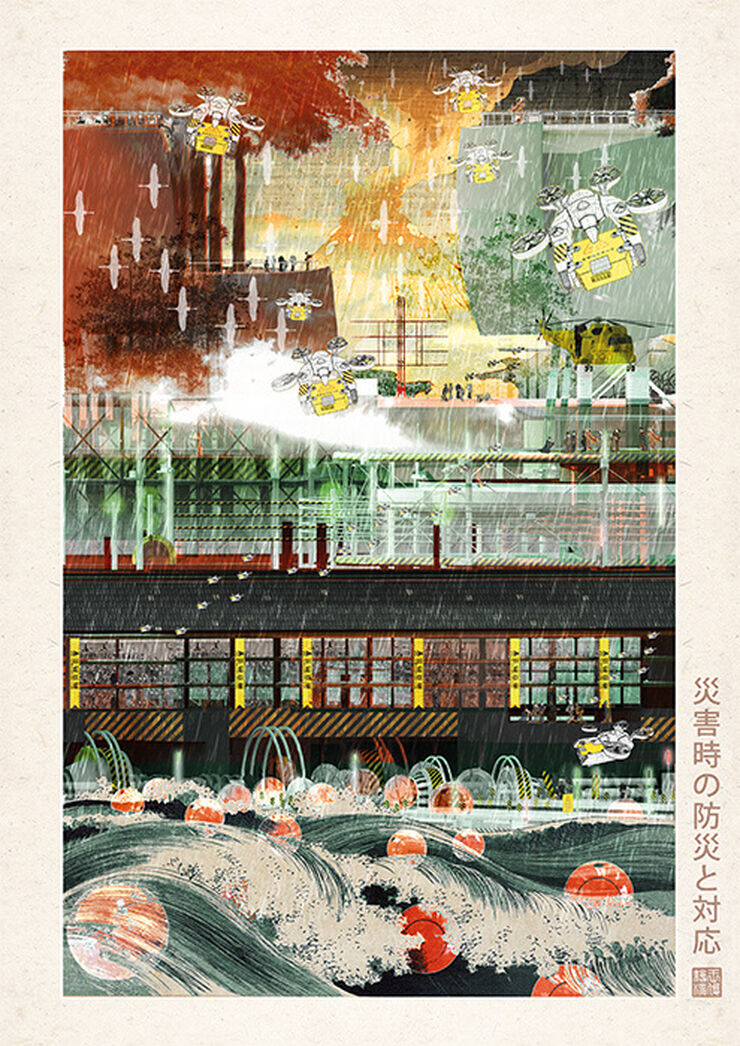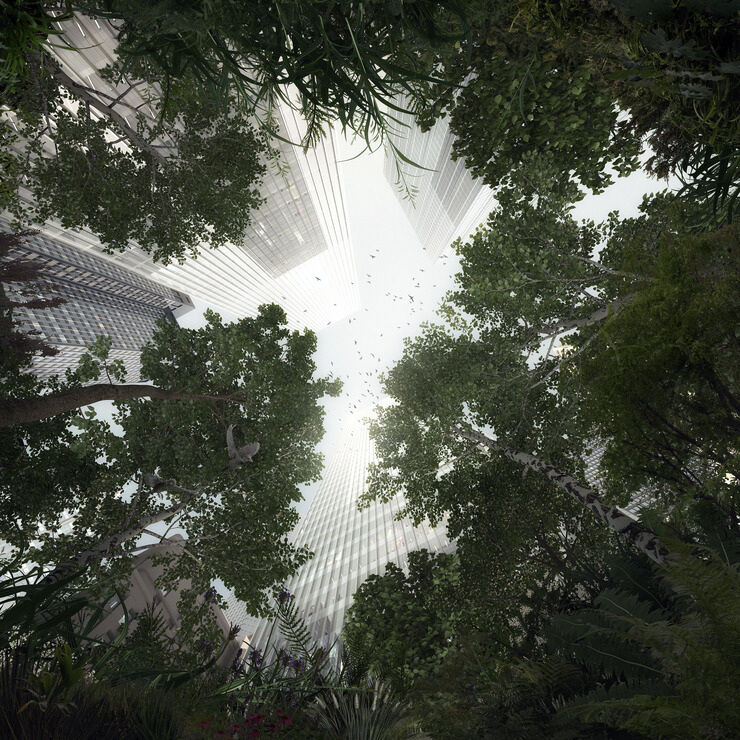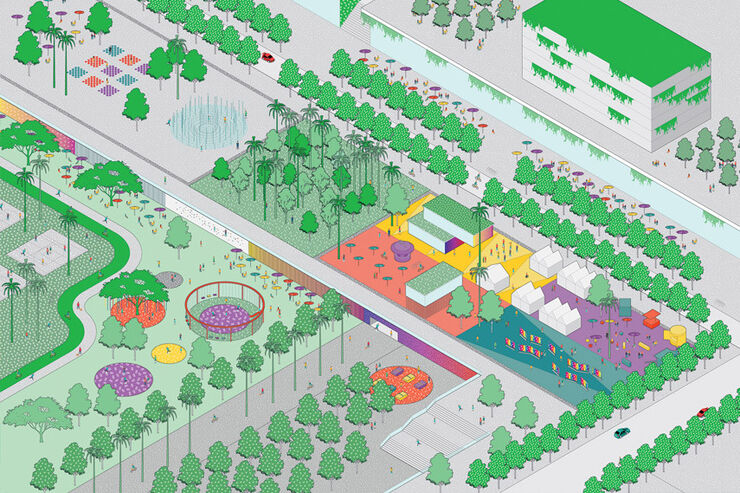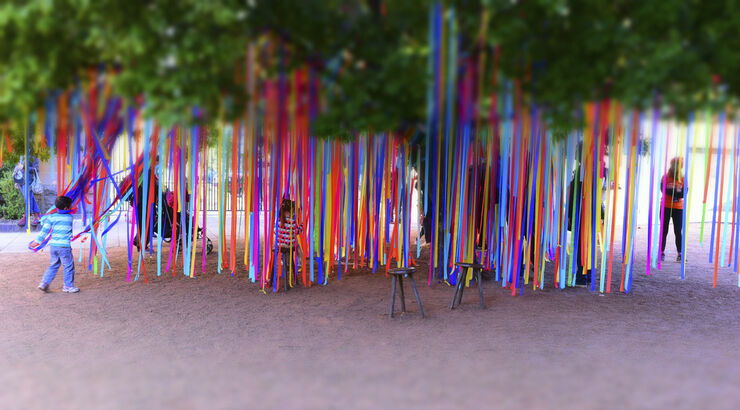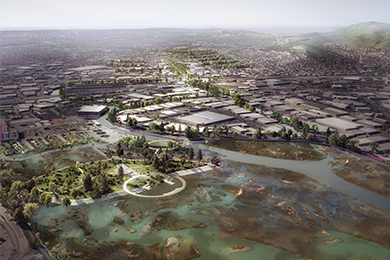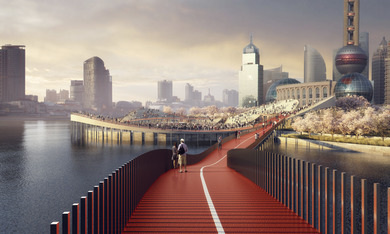Collaboration
Hassell+ was drawn to the Resilient by Design challenge because of our shared passion and unique insight into designing for water and living with water.
Hassell, originating from Australia, and Deltares + Goudappel, based in the Netherlands, share an acute understanding of the social, cultural, economic and ecological potential research-led design can unlock for waterfront communities.
Bay Area partners – Lotus Water + Page & Turnbull + Hatch + Idyllist + Brown & Caldwell – added invaluable local knowledge and connections that shaped the team’s overall approach to the project.
Together, we have years of experience researching, listening and engaging with communities, and designing, prototyping and delivering integrated solutions.
Our interdisciplinary skills range from the design of the built environment to hydrology engineering, systems and product design, heritage assessment and community engagement. But our core strength is in three disciplines / areas of focus:
- Design & Places
- Hydrology & Ecology
- Social Impact & Technology
Research
Resilience to disaster is as much about how communities are able to organise themselves in urban areas as it is about major infrastructure. Resilience challenges are also interdependent with social issues, such as housing affordability, quality transport, and public access to the waterfront.
That’s why our team focused on establishing quality public spaces and stronger communities during the collaborative research phase of Resilient by Design. In a four week immersion, design teams learnt about Bay Area communities, and the unique assets and cultures that connect them.
Research advisors guided this phase, co-delivered with NGOs and government agencies. Then design teams looked at specific sites to prototype multi-benefit solutions that could apply at a regional scale.
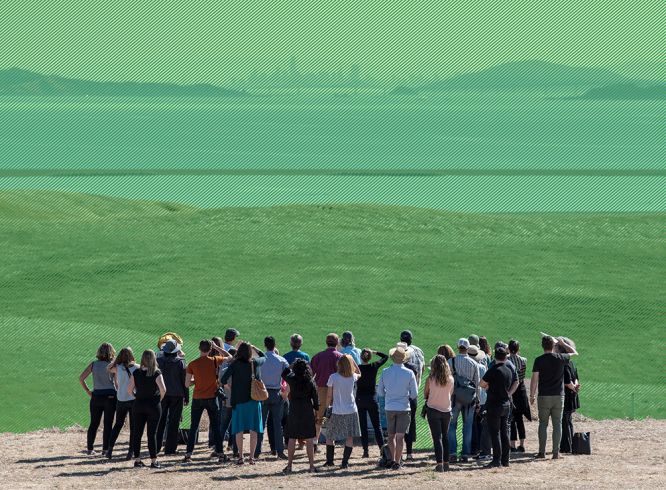
Design toolkit
Building resilience requires identifying challenges and opportunities at both large and small scales. This project began at the regional scale: first looking at the whole Bay Area and its nine counties, 101 cities and many neighbourhoods.
Our ‘Collect and Connect’ response was inspired by the way people in the region used open spaces during both the 1906 San Francisco earthquake – one of the deadliest in US history – and more recent, devastating Northern California wildfires.
Taking our cue from these historic and current patterns of use, we proposed a new network of parklands and public spaces to connect and collect people and water – both before and during times of disaster – within three communities: East Oakland, Redwood City and South San Francisco.
This ultimately helped our international team create a ‘toolkit’ we could apply to proposed sites in South San Francisco for the project’s second phase – collaborative design.
